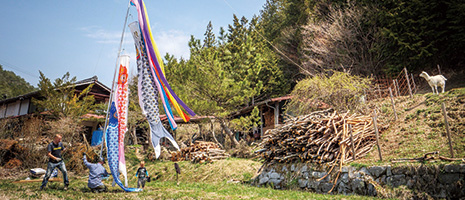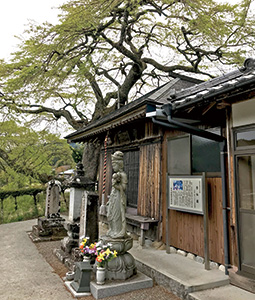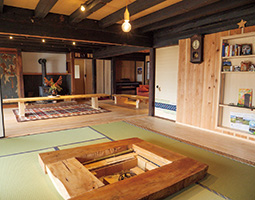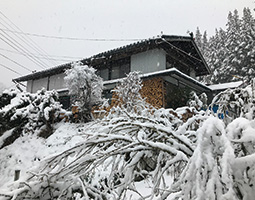Home > Highlighting JAPAN > Highlighting Japan May 2019 > My Way
Highlighting JAPAN


Promoting the Authentic Charm of Minami Shinshu
Alexander Niser lives in the village of Urugi, Nagano Prefecture, where he acts as a Local Vitalization Cooperator, discerning the merits of Japanese tradition and promoting its beauty to the outside world.
Urugi is a small alpine village with a population of less than 550 residents, located in the southern part of Nagano Prefecture adjacent to Aichi Prefecture. Local Vitalization Cooperator Alexander Niser (hereinafter referred to as Alex) is a Belgian-born German who utilizes his language skills in Japanese, English, German, French, and Italian to convey the appeal of the village both in Japan and overseas. Although less well-known than other famous tourist spots in Nagano Prefecture such as the towns of Karuizawa and Hakuba, Urugi is endowed with a wealth of natural beauty owing to its location surrounded by mountains and rivers.
In order to promote the charm of the village abroad, Alex established the Urugi International Center, a base with guest house accommodation which he soft launched in February 2019.
“Urugi is beautiful in all seasons, and the villagers are warm and kind, just like family. There are plenty of great activities on offer. As well as walking and cycling, you can try your hand at rice farming, for example,” says Alex.
As a university student, Alex studied abroad in Sydney, Australia, where he met a Japanese student who later became his wife. The couple moved to Aichi Prefecture, Japan, where Alex found a job as a language teacher and later as a patent proofreader in the automotive industry. During his holidays, he would travel around the country on his motorbike, to places such as Hokkaido or Kyushu. One area that attracted him was the southern part of Nagano Prefecture called Minami Shinshu. With its abundant natural environment of mountains and rivers, he decided that this was where he wanted to raise his children. After repeated visits to Minami Shinshu, a friend living in Urugi introduced him to the village’s mayor, who showed him a traditional alpine house that was over 100 years old and had been left unused for more than 10 years. At first, he rented the house as a family home for himself, his wife and his two children. However, feeling that it would be a pity for the house to be used only as their own residence, Alex came up with a plan to open it up as a cultural exchange center with accommodation facility, and submitted a proposal to Urugi Village for an Urugi International Center. The proposal was assessed, and a decision was made to develop the house as a base for inbound tourism in cooperation with the village office.
“I want to develop the house as a base for inbound tourism in cooperation with the village, but I do not want the area to become a mass tourism destination. I want to preserve the wonderful nature and culture of Urugi,” says Alex.
The Urugi International Center has been only minimally refurbished as a guest house. Alex is replacing the corrugated iron wall covering outside with wattle and daub, to restore the house to its original beauty. The two-tiered roof design is an architectural style commonly used for sericulture farms in alpine areas where sericulture was once common. The house is designed to allow warm air from the irori hearth to rise through a gap in the ceiling boards of the first floor, providing a comfortable environment for the silkworms, which are susceptible to the cold. Also, the smoke rising from the irori fumigated the space, from the floor and pillars to the entire roof, protecting the silkworms from disease.
After the original landlord of the old house stopped practicing sericulture, a plywood board was stuck over the irori to hide it. However, Alex decided to restore the area to create a place that people could gather around. Working with an architect, local carpenters and young people, Alex replaced the old tatami mats with custom-fitted mats that surround the renovated irori and relaid wooden flooring for the entertaining area. In refurbishing, he used the traditional Japanese method of building without using nails, reproducing the original beauty of the farmhouse.
Alex also actively participates in traditional village events. Every winter, villagers gather at the Kannon-do Hall in the center of the village and take part in the communal chanting of nenbutsu sutras, praying for good health and safety every day for forty-eight days. It was the first time for a non-Japanese person to participate in this event, a tradition that has been carried on by villagers for some 260 years.
“The way of life here and the way people feel about this place cannot be understood just by visiting. I think that to know this is the true meaning of international exchange,” says Alex.
Alex hopes that the Urugi International Center will be a place of international exchange that conveys the merits of traditions and their simple beauty that at one time could be found everywhere in Japan.
© 2009 Cabinet Office, Government of Japan










